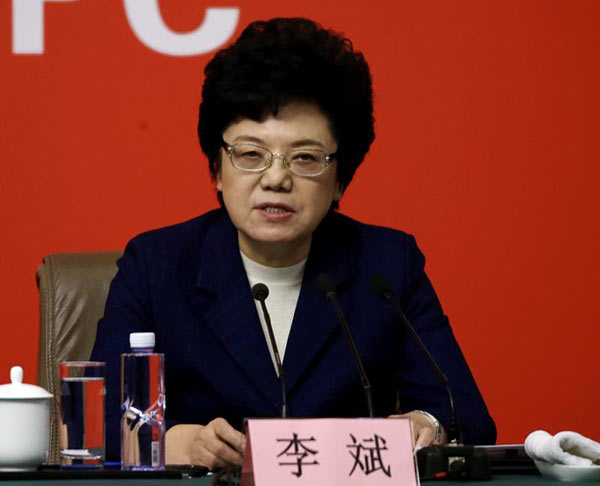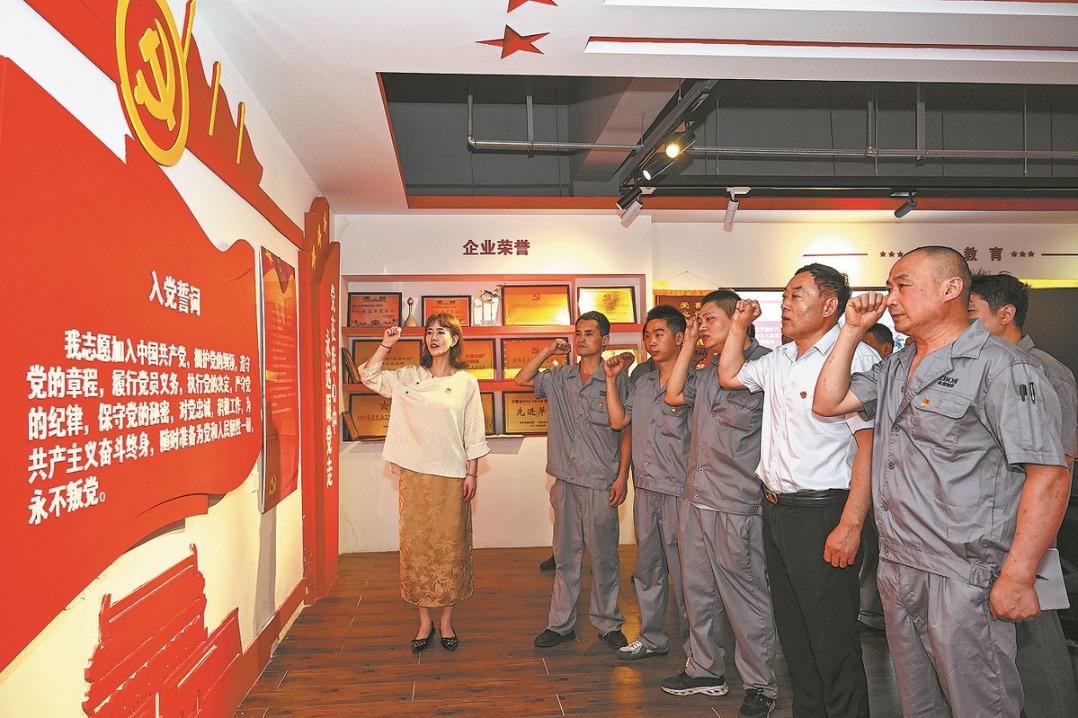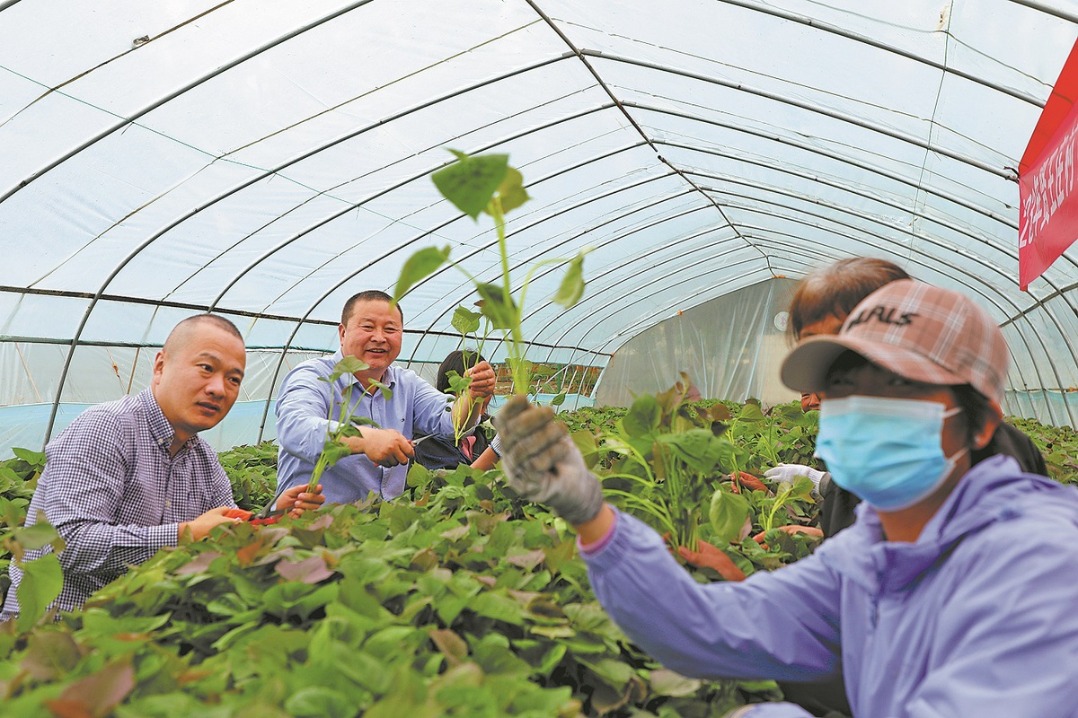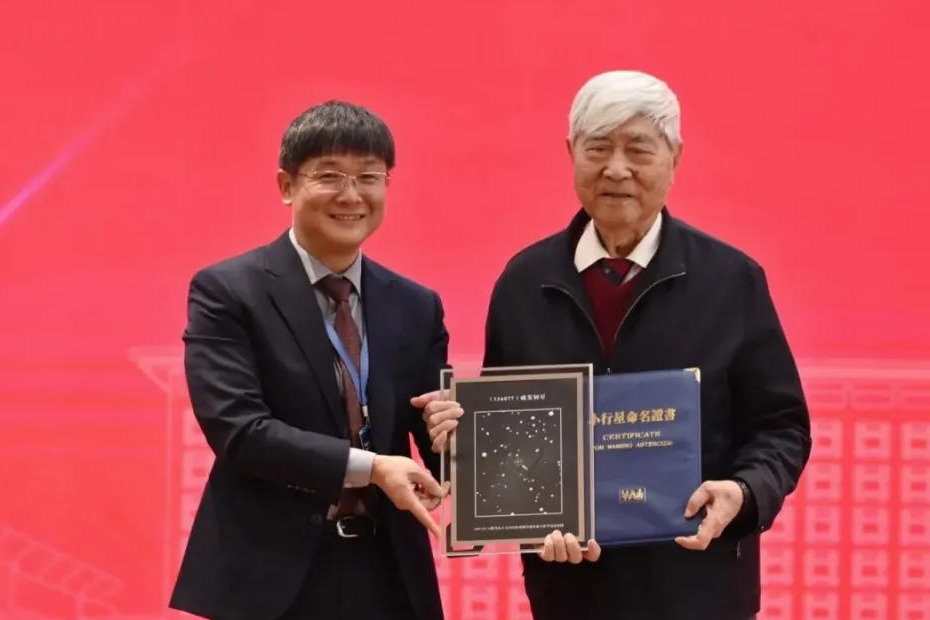China records increase in medical resources in 5 years

 |
| Li Bin, Secretary of the Party Leadership Group and Minister of the National Health and Family Planning Commission, answers questions from the press in Beijing on Oct 22, 2017. [Photo by Edmond Tang/China Daily] |
The availability of medical resources in China has increased in the past five years, with people at grassroots having better access to healthcare facilities, Li Bin, minister of the National Health and Family Planning Commission, said on Sunday.
By the end of last year, the number of medical institutions in China reached 980,000, and the number of health workers exceeded 11 million, she told a news conference on the sidelines of the 19th National Congress of the Communist Party of China.
The number of registered physicians per 1,000 people in China reached 2.3 last year, compared with 1.8 five years ago. The number of registered nurses per 1,000 people in China reached 2.5 last year, compared with 1.5 five years ago, she said.
The number of hospital beds for every 1,000 people reached 5.4 last year, compared with 3.6 five years ago, she said.
Of all 7.9 billion diagnostic and treatment services provided by hospitals and clinics in China last year, more than 55 percent were provided by institutions at grassroots, she said.
To help medical institutions at grassroots improve abilities, more than 6,800 public hospitals have established partnership with such institutions through internet to provide guidance and training, she said.
To control medical expenditure, all public hospitals, the primary provider of healthcare services in China, banned price markup for the drugs they sold to patients at the end of September, a practice carried out for decades by many public hospitals as a major source of income, Li said.
Besides drugs, fees for medical services and checkups and tests, such as CT scanning, were also reduced as part of the ongoing healthcare reform, she said.
For example, in Beijing, which abolished drug price markup in all the city's public hospitals in April, patients saved 4.4 billion yuan ($665 million) in medical expenditure between April and September.
"We still face many challenges in improving health services, such as shortage of talent at rural and remote areas," Li said. "We will continue to promote reforms to provide higher quality, safer and more effective services to the people."
- Taiwan opposition lawmakers announce plan to impeach Lai Ching-te
- Half marathon route along Suzhou Creek in Putuo
- People across China hold diverse events to mark Winter Solstice
- China issues guidelines to crack down on tobacco-related illegal activities
- 1 arrested after Hong Kong money changer employee robbed of about 1b yen
- Efforts intensified to ease business issues




































